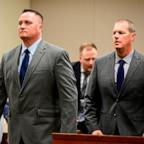'Three Cups of Tea' author finds new mountains to climb
'Three Cups of Tea' author reflects on lessons of travel, looks ahead to 2009.
WASHINGTON -- Globe-trotting humanitarian Greg Mortenson, co-author of the best-selling memoir Three Cups of Tea: One Man's Mission to Promote Peace … One School at a Time, keeps a reminder pasted to his bathroom mirror back home in Bozeman, Mont.: "When your heart speaks, take good notes."
Mortenson's own heart started hollering 15 years ago, when the exhausted mountaineer lost his way in northeastern Pakistan's untrammeled Karakoram Range. After stumbling nearly 60 miles down a glacier to the Muslim hamlet of Korphe — where he was welcomed as the first foreigner the 400 villagers had encountered — he watched local children substitute mud-coated sticks for pencils in an apricot orchard that served as their only classroom.
Inspired by his parents' work to start a hospital and school on the slopes of Mount Kilimanjaro, Tanzania, and by fellow climber Edmund Hillary's charitable work in the Nepalese Himalayas, Mortenson promised he would return to Korphe to build a school.
But unlike most well-meaning tourists touched by encounters with Third World poverty, Mortenson delivered on his pledge.
That unsuccessful shot at scaling Pakistan's K2, the world's second-highest mountain, changed Mortenson's life course from self-described "dirtbag climber" to literacy promoter, citizen diplomat and publishing sensation.
Since its publication in early 2006, Three Cups of Tea has sold more than 2.5 million copies in 29 languages; it's been on USA TODAY's Best-Selling Books list for 95 weeks. A young-readers' edition with an afterword by Mortenson's 12-year-old daughter, Amira, arrives this month.
His non-profit foundation, the Central Asia Institute (ikat.org), has built 78 schools serving 28,000 students in remote, politically volatile pockets of Pakistan and Afghanistan, and it runs nearly 50 others in regional refugee camps. Nearly all of its $2.8 million annual budget is funded by modest, individual donations — many of them inspired by Mortenson's story during one of his roughly 150 appearances a year at an eclectic mix of college and high school campuses, churches and civic groups.




